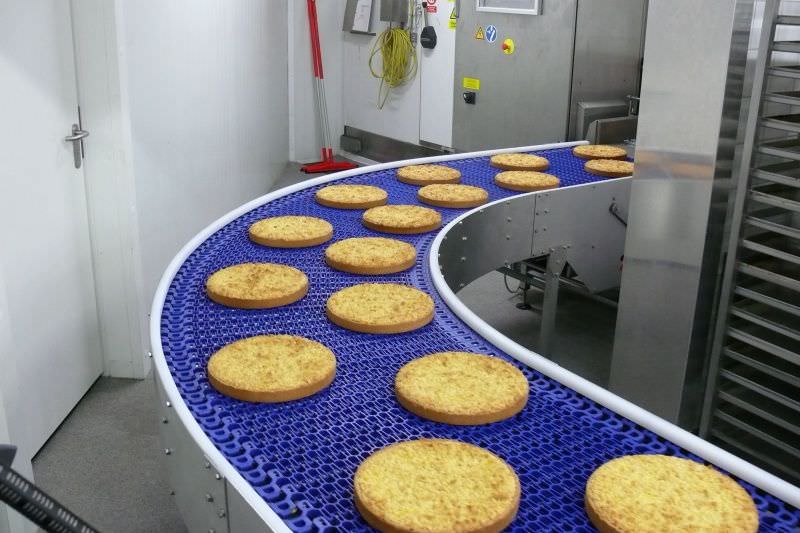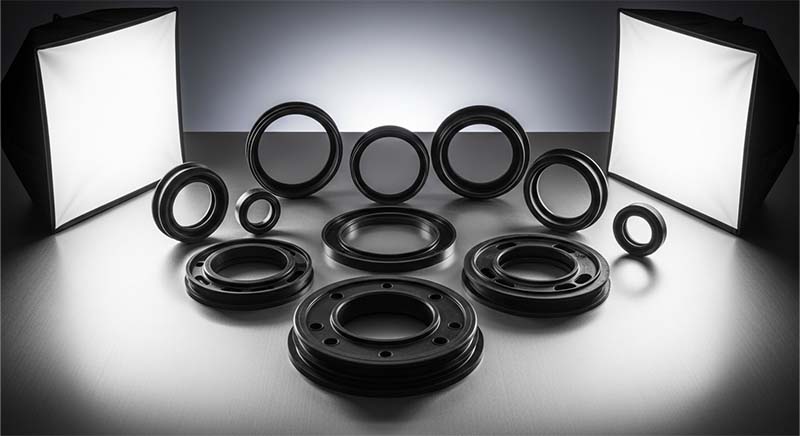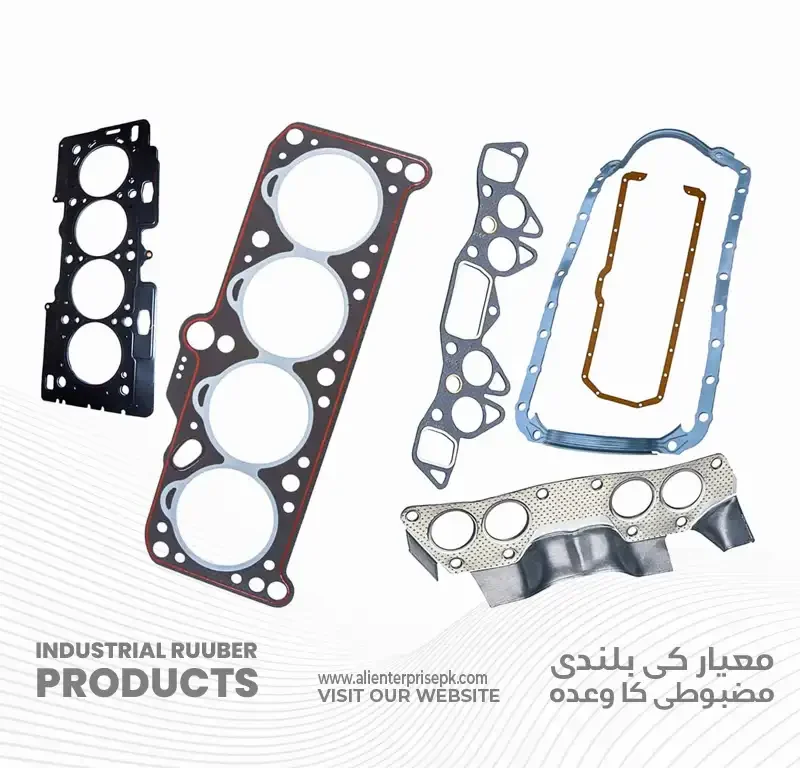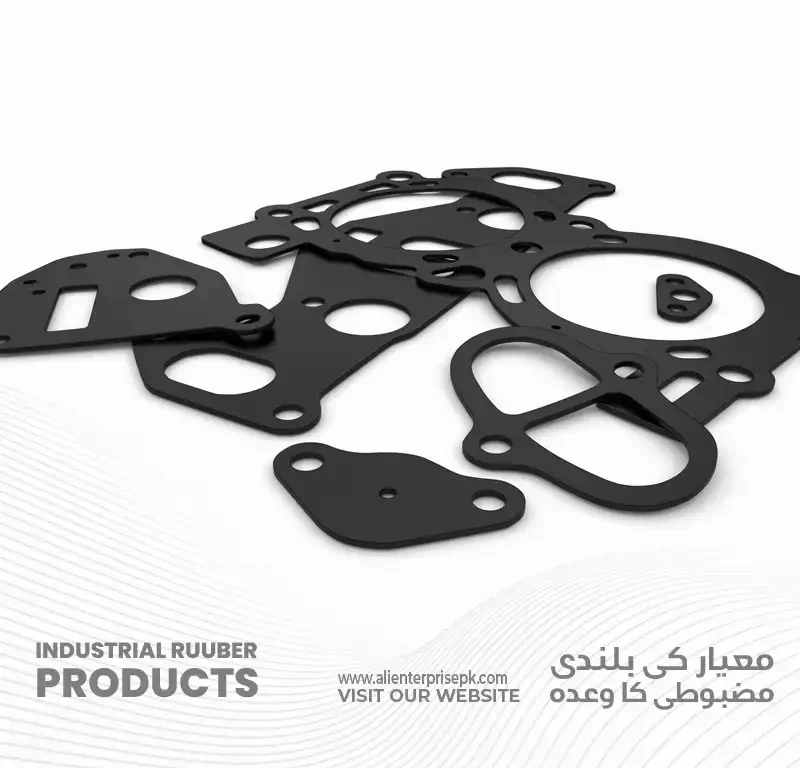Silicone Rubber Rollers | in Various Applications
March 13, 2023
Mastering Concrete Pumping Efficiency with the Concret Pump Piston Ramp
October 18, 2023In the intricate dance of modern food production, where efficiency and safety are paramount, one unsung hero plays a crucial role – the food-grade conveyor belt. These unassuming belts, designed specifically for use in the food industry, are instrumental in ensuring that our favorite foods make their way from the farm to our tables safely and hygienically.
In this 1500-word blog post, we’ll explore the world of food-grade conveyor belts, their importance, the materials they’re made from, and how they contribute to maintaining the highest standards of safety and quality in the food industry.
The Role of Food-Grade Conveyor Belts
To comprehend the significance of food-grade conveyor belts, we need to understand their role in the food production process. These belts are the arteries of the food industry, facilitating the movement of raw ingredients, processed goods, and packaged products through various stages of production. They do so with precision, speed, and cleanliness, which are of utmost importance in food manufacturing.
Key Characteristics of Food-Grade Conveyor Belts
- Hygienic Materials: Food-grade conveyor belts are typically made from materials that are safe for direct contact with food. Common materials include rubber, polyurethane, and PVC, all of which meet strict food safety regulations.
- Smooth and Easy-to-Clean Surfaces: The surface of these belts is designed to be smooth and easy to clean. This prevents the buildup of food particles, reducing the risk of contamination and bacterial growth.
- Resistance to Chemicals and Oils: Food production environments can be harsh, with exposure to various chemicals and oils. Food-grade conveyor belts are formulated to resist these substances, ensuring longevity and safety.
- Temperature Resistance: Some food production processes involve extreme temperatures. Food-grade conveyor belts are designed to withstand both hot and cold conditions without degradation.
- FDA and EU Compliance: In the United States, the Food and Drug Administration (FDA) and in the European Union, the European Food Safety Authority (EFSA) set stringent regulations for materials that come into contact with food. Food-grade conveyor belts must meet these standards to be considered safe.
Types of Food-Grade Conveyor Belts
Food-grade conveyor belts come in various types, each suitable for specific applications within the food industry. These include:
- Modular Plastic Belts: Known for their versatility, these belts are used in a wide range of industries, from meat processing to bakeries. They’re easy to clean and provide excellent drainage.
- Positive Drive Belts: These belts feature integrated teeth on the underside, ensuring that products are positively driven along the conveyor. They’re ideal for applications where precise positioning is crucial.
- Wire Mesh Belts: These belts are designed for applications that require airflow and liquid drainage. They’re commonly used in industries such as baking and frying.
- Fabric-Based Belts: Made from materials like rubber and fabric, these belts are suitable for conveying bulk materials, such as grains and powders.
Applications in the Food Industry
Food-grade conveyor belts find applications across the food industry, including:
- Meat and Poultry Processing: In meatpacking plants, conveyor belts move cuts of meat through various stages of processing, from slicing to packaging.
- Bakery and Confectionery: Conveyor belts handle dough, baked goods, and confectionery items. They must meet strict hygiene and quality standards.
- Fruit and Vegetable Sorting: Conveyor belts are used in fruit and vegetable processing facilities to sort, clean, and package produce.
- Beverage Production: From filling and capping bottles to labeling and packaging, conveyor belts are essential in beverage production.
- Dairy Industry: Dairy products, from milk to cheese, rely on food-grade conveyor belts for processing and packaging.
The Importance of Regular Maintenance
The reliability and safety of food-grade conveyor belts are contingent on proper maintenance. Regular inspections, cleaning, and, if needed, replacement are essential to prevent contamination and ensure the belts operate smoothly.
Challenges and Innovations
The food industry is continuously evolving, and with it, the demands on food-grade conveyor belts. Challenges include the need for more complex designs, such as belts that can handle delicate food items without damage. Innovations in belt materials, design, and sanitation are at the forefront of addressing these challenges.
In Conclusion
Food-grade conveyor belts are the unsung heroes of the food industry, ensuring that our food products meet strict safety and quality standards. Their importance cannot be overstated, and their continued evolution is vital to meet the demands of a rapidly changing industry. The next time you enjoy a meal, take a moment to appreciate the role these unassuming belts play in delivering safe and delicious food to your table.
Food grade conveyor belts are an essential component of the food processing industry in Pakistan. These belts are designed to handle and transport food products in a hygienic and efficient manner. The food-grade conveyor belt is made up of materials that are safe for food contacts, such as polyurethane, polyethylene, and silicone. In this article, we will discuss the importance of food-grade conveyor belts in Pakistan and the different types available.
Importance of Food Grade Conveyor Belts in Pakistan
The food processing industry in Pakistan is growing rapidly, and there is a growing demand for food-grade conveyor belts. These belts are designed to meet the strict hygiene and safety standards required in the food industry. Food-grade conveyor belts are used in a wide range of applications, from transporting raw materials to packaging finished products.
One of the primary reasons for using food-grade conveyor belts is to prevent contamination of food products. These belts are designed to be easy to clean and maintain, reducing the risk of bacteria and other contaminants building up on the surface. Food-grade conveyor belts are also resistant to chemicals, moisture, and high temperatures, making them ideal for use in harsh environments.
Different Types of Food Grade Conveyor Belts
There are several different types of food-grade conveyor belts available in Pakistan, each designed to meet specific requirements. The most common types of food-grade conveyor belts are:
- Modular Conveyor Belts: These belts are made up of interlocking plastic modules that can be easily replaced if damaged. They are easy to clean and can be customized to fit specific applications.
- PVC Conveyor Belts: PVC conveyor belts are lightweight, durable, and resistant to chemicals and abrasion. They are easy to clean and maintain, making them ideal for use in the food industry.
- PU Conveyor Belts: PU conveyor belts are made up of thermoplastic polyurethane, which makes them strong, durable, and flexible. They are resistant to chemicals, abrasion, and temperature extremes.
- Silicone Conveyor Belts: Silicone conveyor belts are non-toxic, flexible, and resistant to high temperatures. They are ideal for use in applications that require high heat resistance.
Conclusion
In conclusion, food-grade conveyor belts are an essential component of the food processing industry in Pakistan. They are designed to meet the strict hygiene and safety standards required in the food industry, preventing contamination of food products. There are several different types of food-grade conveyor belts available in Pakistan, each designed to meet specific requirements. When choosing a food-grade conveyor belt, it is important to consider the specific needs of your application to ensure that you select the right type of belt for your needs.








